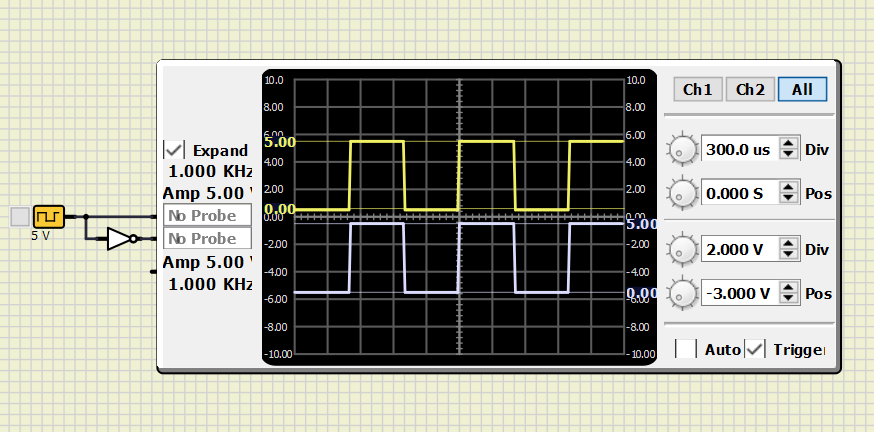Hi,
Finding no free simulator for atmega8515 I have added it to the SimulIDE. It may be helpfull for somebody. The attached .zip includes sim_mega8515.c (for simavr), atmega8515.data, atmega8515.package and updated sim_core_decl.h and avrs.xml. As the atmega8515.data presents hexadecimal register addresses (Atmel prefered this format), the included baseprocessor.cpp is modifid to accept both decimal and hexadecimal numbers.
Starting the simulation I have found, that the current version of the oscilloscope is almost useless for me. In contrast to real life oscilloscope, where both channels use the same trigger (from one of the channels or external source), the simulated oscope has independent triggers for each channel. So it is impossible to anlyse time/phase shifts between signals. As quick and dirty solution I have substituted trigger event (m_saveData) in the second channel by the one from the first. The included oscope and oscopechannel cpp/h files provide this hack. The result is illustrated by the pictures with inverted signal applied to the second channel. In original oscope the signals are undistingushiable.

In modified one the first channel triggers both, and the phase of the inverted signal is correct.

Finding no free simulator for atmega8515 I have added it to the SimulIDE. It may be helpfull for somebody. The attached .zip includes sim_mega8515.c (for simavr), atmega8515.data, atmega8515.package and updated sim_core_decl.h and avrs.xml. As the atmega8515.data presents hexadecimal register addresses (Atmel prefered this format), the included baseprocessor.cpp is modifid to accept both decimal and hexadecimal numbers.
Starting the simulation I have found, that the current version of the oscilloscope is almost useless for me. In contrast to real life oscilloscope, where both channels use the same trigger (from one of the channels or external source), the simulated oscope has independent triggers for each channel. So it is impossible to anlyse time/phase shifts between signals. As quick and dirty solution I have substituted trigger event (m_saveData) in the second channel by the one from the first. The included oscope and oscopechannel cpp/h files provide this hack. The result is illustrated by the pictures with inverted signal applied to the second channel. In original oscope the signals are undistingushiable.

In modified one the first channel triggers both, and the phase of the inverted signal is correct.

- Attachments
 corrected_files.zip
corrected_files.zip - You don't have permission to download attachments.
- (13 Kb) Downloaded 5 times

 Latest images
Latest images



